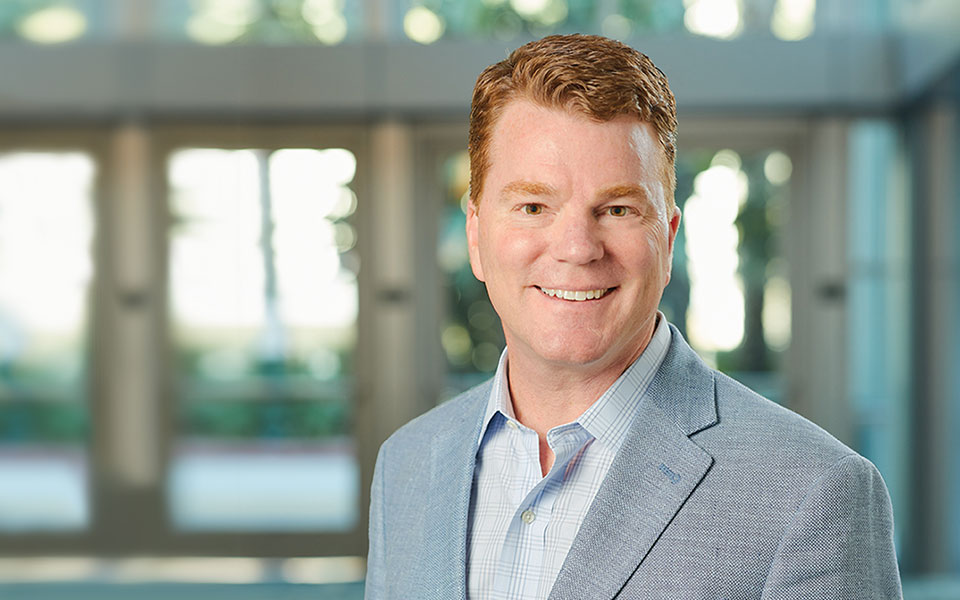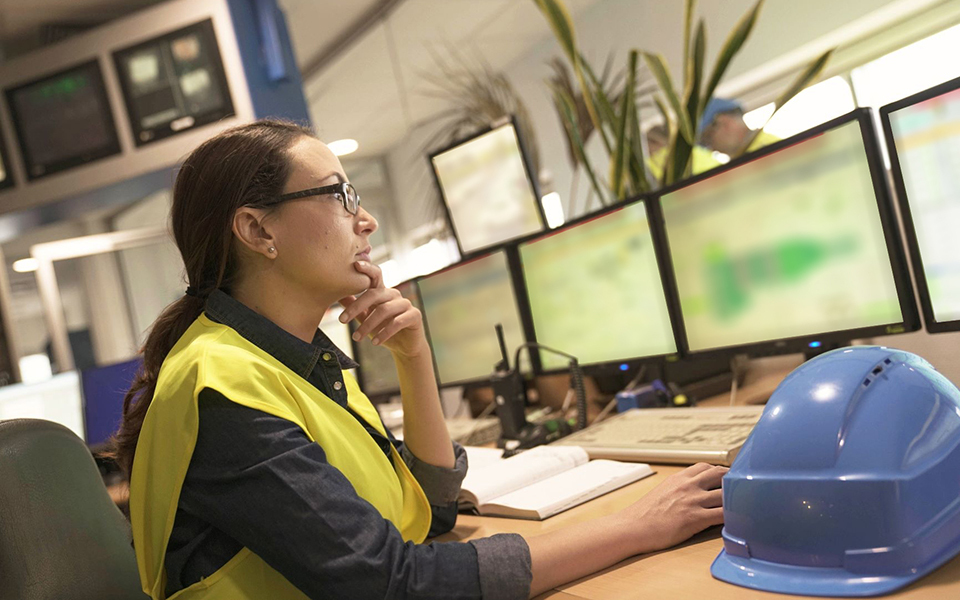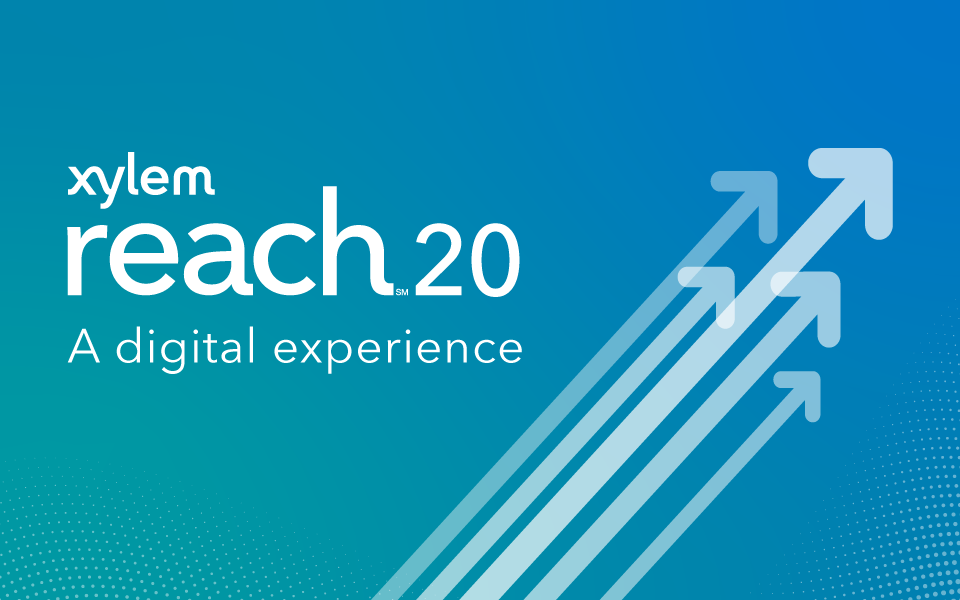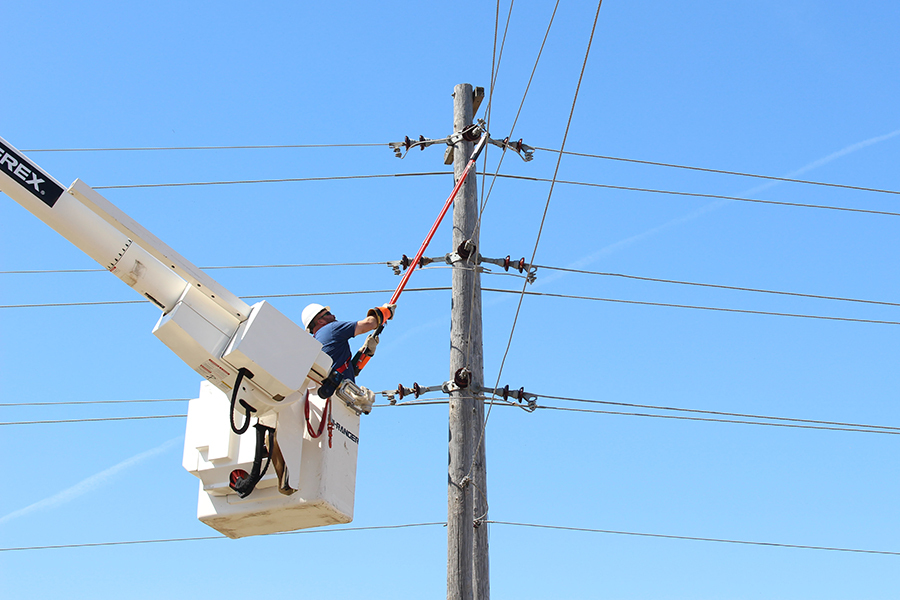
Customer Connection

A Note from Colin Sabol: Thank You
Together, we are unstoppable. Never has this been truer than in 2020. And never have I been prouder to support the essential work you all do every day.
At the end of 2019, I asked you to collaborate with us more. To tap in to this ecosystem we have created. To talk to us about the challenges you are facing, so we could tackle them… together.
What I didn’t anticipate were the challenges 2020 would bring. The ways that we would need to come together. The ways you all would come together to support your communities.
So when I watched parades line up to cheer on healthcare workers from afar, I would also stop to thank our utility workers for the essential service you bravely provided. How overnight, you transformed your workforces. How every time a student could safely join a remote classroom or a medical worker washed their hands, I knew our customers made that possible by providing water and electricity. You all creatively used the technology you already have and quickly deployed new solutions where needed.
While you continue to manage through uncertainty, know that we are here. To help you respond in times of crisis, including through our Watermark assistance programs. To facilitate conversations with you and your peers, such as at the upcoming digital Reach conference. To support your essential work.
Thank you all for your continued partnership, and all of the important work you did this year. I look forward to continuing this discussion at Xylem Reach 20.
Sincerely,

Colin R. Sabol
Senior Vice President and President
Xylem Measurement & Control Solutions

Customer Spotlight: Adapting Disaster Preparedness Plans
Whether you’re providing your customers with clean water, fueling their gas or providing electricity that keeps the lights on, you deliver an essential service to your community. In the past decade, we’ve seen many unpredictable challenges come our way — hurricanes, tornados, wildfires and most recently, the COVID-19 pandemic.
In all these circumstances, we’ve seen our customers use technology and data to restore services quickly. We’ve also seen our customers go above and beyond — not just restoring services, but going the extra mile to support their customers in times of need. One large electric and natural gas utility in the Mid-Atlantic pledged more than $1 million to organizations that support individuals whose incomes were most affected by the COVID-19 pandemic and funding for housing assistance and food distribution. Many of our customers offered payment assistance plans, or established emergency funds to support customers. One large natural gas distribution company contributed more than $1 million to organizations focused on energy assistance, homelessness and family services.
All of this came at a time when many of you had to adjust disaster preparedness plans you had in place. Through our Sensus Partner and Advisor Network, we learned that more than 70% of our customers have business continuity plans in place, but are evaluating how they should be adjusted given the “new normal” of the past six months. This includes smaller staffs and flexible working arrangements, along with adapting for enhanced cleaning, sanitizing and safety precautions.
We want to hear how you are innovating to better support your organization and community. What specific adjustments has your organization made? To share your story, please contact Lindsay Hill and the next customer spotlight could be yours.

Solution Spotlight: The Value of AMI and Managed Services
It has become inordinately clear that remote system management and robust data will continue to play a key role in utility infrastructure moving forward. A smart utility network can help you make data-driven decisions while also safely managing outage response or other detected issues.
One customer in the Pacific Northwest recently shared that “one of the benefits the Sensus AMI system has offered in times like these is our ability to help customers remotely and read our meters without having any customer contact.”
If you’re looking at other AMI opportunities without capital investment, we offer Network as a Service (NaaS), where your services are managed, monitored and maintained through our Network Operations Center (NOC), ensuring that your network is always up and operating. Amidst severe weather and other disasters, we’ve seen immediate value of these data centers where we have back up and safety within the center. Additionally, a Software as a Service (SaaS) cloud-based environment can support hosting many of your software solutions in a continuous, accessible location.
If you want to learn more about AMI, SaaS, NaaS or other solutions to propel you in the future, contact your Sensus sales representative.

Reach Conference: Join Us for the 2020 Digital Experience
Every year, our Reach Conference offers an opportunity for us to get together with our customers, distributors and partners for several days of valuable conversation around industry trends, case studies and deployment stories, product demos and training. Although this year’s gathering will take place online, the Reach 2020 digital experience brings what you value most about the conference, and extends the possibilities for participation. So whether you’re new to Reach or have been attending for years, join us this year and encourage all of your teammates to do the same. This year’s complimentary experience will include:
- Utility presentations from our customers across the country and around the world, sharing how they maximized their networks and handled challenges along the way
- Panel discussions on leading trends in energy and water management
- Sessions on new technology development
- Hardware and software demos from subject matter experts across our Xylem family
- Executive conversations with Xylem leaders
- A live keynote sessions from tech entrepreneur, innovator and author Josh Linkner
- A virtual exhibit hall featuring our partners
- Networking lounges for a peer-to-peer exchange of ideas
Register today! If you’ve already registered, you can log in to check out all of the on-demand content available and the upcoming schedule. Then, join us on October 13-14 for live sessions!

Watermark in Action: COVID-19 Relief Efforts
Our Xylem Watermark program has expanded to support COVID-19 response. As part of this expansion, we have dedicated $3 million to global non-profit organizations and local initiatives that support the communities our customers, partners and employees live and work in.
This includes the following specific programs to support your community:
- Watermark Partner Community Grants Program: If you’d like to partner with a nonprofit organization engaged in COVID-19 response efforts in your community, you can apply for a Xylem Watermark grant up to $25,000 to support the nonprofit organization directly. Learn how other customers are providing food to out-of-work restaurant and hospitality workers, providing meals to the food insecure and more through this program: https://www.xylem.com/en-us/watermark/covid-19-response/providing-food-to-out-of-work-restaurant--hospitality-workers/.
- Watermark Partner Contributions Program: Xylem Watermark has committed $500,000 to provide a 1:1 match of customer donations to COVID-19-related nonprofit programs. You can either make a donation to existing initiatives through the Watermark Community Impact Portal or establish a matching fundraiser for a different nonprofit you would like to support.
To apply for a grant, make a donation or establish a matching fundraiser, visit https://www.xylem.com/en-us/watermark/covid-19-response/.

Sensus Blog: Gratitude and Guidance for Utilities this National Preparedness Month
Utility Management Series: Planning for the Post-Pandemic Future
This series tackles the prevailing dilemmas happening in utility boardrooms across the United States, now covering the question: How to prepare during times of uncertainty?
Eating in restaurants, traveling to see loved ones, staying healthy… There are many things we once took for granted that this year has called into question. But water, electricity and gas are resources many of us continue to rely on despite the world changing around us. For this, we can thank our utilities. They have kept the lights on, the water running, and powered the ability for millions of Americans to work safely and remotely.
Earlier this year, Xylem employees and partners rallied to thank our utilities. I personally wanted to bring this message back to the forefront this National Preparedness Month and share a few words with electric utilities who are addressing an extremely active storm season on top of the COVID-19 pandemic.
In previous years, a hurricane forecast served as a cry for neighboring utilities to send in crews and equipment to support power restoration. This practice, known as mutual assistance, relied on crews being able to travel and gather. Due to the pandemic, this practice has changed with staging sites centralized and workforces dispersed. For the future, preparedness plans must also shift to address new realities like this. The following are key things utilities should consider when reevaluating or rebuilding preparedness plans:
The impact of the pandemic is here to stay. While we could not have anticipated the events of this year, we must now be realistic that a “return to normal” won’t exactly be the same “normal.” Anticipate that social distancing, skeleton crews and decreased access to homes could be challenges that continue. Plan accordingly by running preparedness drills or tests within these new confines. Identify ways that crews can safely communicate without gathering in large groups and work at a safe distance from customers and each other. Look to resources and best practices from other utilities and organizations. For example, the American Public Power Association also has a wealth of resources available on their COVID-19 Information Hub.
Remote management is a must. One clear way to deal with smaller crews and social distancing is to capitalize on remote outage management. As you consider solutions, ask yourself, “How am I deploying assets that allow me to restore power remotely?” Previously utilities focused on deploying assets based on the need in a specific service territory. Now, outage management is critical across all service territories as utilities plan for restoring service quickly and safely. These systems can also provide the data you need to update customers and deploy crews most effectively.
Your customers expect rapid updates on their service. The same labor force that is now comprised of millions of at-home workers is also stacked with a digital generation that expects data on-demand. For utilities, this means that customers are not only are conditioned to receive data quickly, they are also under pressure to have connectivity so they can work. Frequent status updates via text alerts and social media help reassure your customers that you’re working to get their service restored.
Now more than ever, technology must grow with you. What problem are you trying to solve right now? What does your preparedness plan need to address in the next five, 10 and even 20 years? Ask your organization these questions if and when you consider deploying technology as part of your preparedness plan.
We’re here to help through the Xylem Watermark Partner Community Grants Program and Disaster Relief Assistance. The best preparedness plans can still fall short in restoring your community due to the pandemic or a natural disaster. These programs are designed to bridge the gap by supporting local nonprofits and humanitarian aid organizations.
Upcoming Events
October 13-14, 2020
October 27-29, 2020
In the News
Check out some of our most recent news releases and contributed articles.
NEWS RELEASES
- Central Hudson Expands Distributed Energy Resource Capabilities with Sensus
(July 7, 2020) - Nicor Gas Modernizes System to Cultivate Advanced Data Capabilities with Sensus Technology
(July 16, 2020) - Georgia City Charges Forward on Water Loss Control with Sensus, a Xylem Brand
(July 23, 2020) - Winston-Salem/Forsyth County Utilities Selects Sensus for Smart Utility Network
(July 28, 2020) - NC Electric Co-op Modernizes with Smart Utility Network from Sensus
(August 18, 2020)
ARTICLES
- Testing the Waters
(WaterWorld | July 2020 Issue) - Central Hudson Expands Distributed Energy Resource Capabilities with Sensus
(Distributed Energy | July 7, 2020) - Central Hudson Expands DER Capabilities
(T&D World | July 14, 2020) - A Smarter Water Future
(WWT | July 14, 2020) - Nicor Gas Nears Completion of Smart Meter Rollout
(Smart Energy International | July 17, 2020) - Georgia City Charges Forward On Water Loss Control With Sensus, A Xylem Brand
(Water Online | July 23, 2020) - Dallas Saves 12 Million Gallons of Water Thanks to Smart Meters
(Smart Energy International | July 28, 2020) - Winston-Salem/Forsyth County Utilities Selects Sensus for Smart Utility Network
(WaterWorld | July 28, 2020) - North Carolina Utility Selects Sensus for Smart Utility Network
(Smart Energy International | July 29, 2020) - Long Beach Achieves Strong ROI with Sensus Gas AMI Solutions
(Southern Gas Association Newsletter | Quarterly Issue) - NC Electric Co-op Modernizes with Smart Utility Network from Sensus
(Bloomberg | August 18, 2020) - Smart Utility Network Helps City Reduce Annual Water Loss by 12 Million Gallons
(Xylem Making Waves | August 19, 2020) - NC Electric Co-op Modernizes with Smart Utility Network from Sensus
(Powergrid International | August 20, 2020) - We Expect Improved Momentum in Smart Water Metering in India Going Forward: Sensus
(ETEnergyWorld | August 28, 2020) - Smart Utility Network Helps City Reduce Annual Water Loss By 12 Million Gallons
(Water & Wastewater Asia | September 1, 2020) - Insight: The Impact of COVID-19 on the Utilities Industry
(TSM | September 6, 2020) - Smart Utility Network Helps City Reduce Annual Water Loss
(Impeller Net | September 17, 2020) - Huntington’s C.I. Thornburg Co. becomes CITCO Water
(Tech Register | September 20, 2020) - Utility Meters Coming to Jasper
(The Herald | September 23, 2020)
CASE STUDIES
- Central Hudson Expands Distributed Energy Resource Capabilities with Sensus
(July 7, 2020) - Illinois' Nicor Gas Evolves System to Cultivate Advanced Data Capabilities with Sensus
(July 16, 2020) - Georgia City Charges Forward on Water Conservation Initiative with Sensus
(July 23, 2020) - North Carolina Electric Co-op Modernizes Grid Infrastructure with Sensus
(August 18, 2020)
About Sensus Customer Connection
Sensus Customer Connection is a quarterly e-newsletter focused on company announcements, initiatives, product information and upcoming events. It's also a place where you can learn from your peers and hear about how Sensus products and services help them achieve their organizational goals.
If this issue was forwarded to you and you'd like to receive future issues, you can subscribe here.
Share your feedback
We encourage you to get in touch with our team to share your success story. Contact Lindsay Hill and the next customer spotlight you read might be your own.
